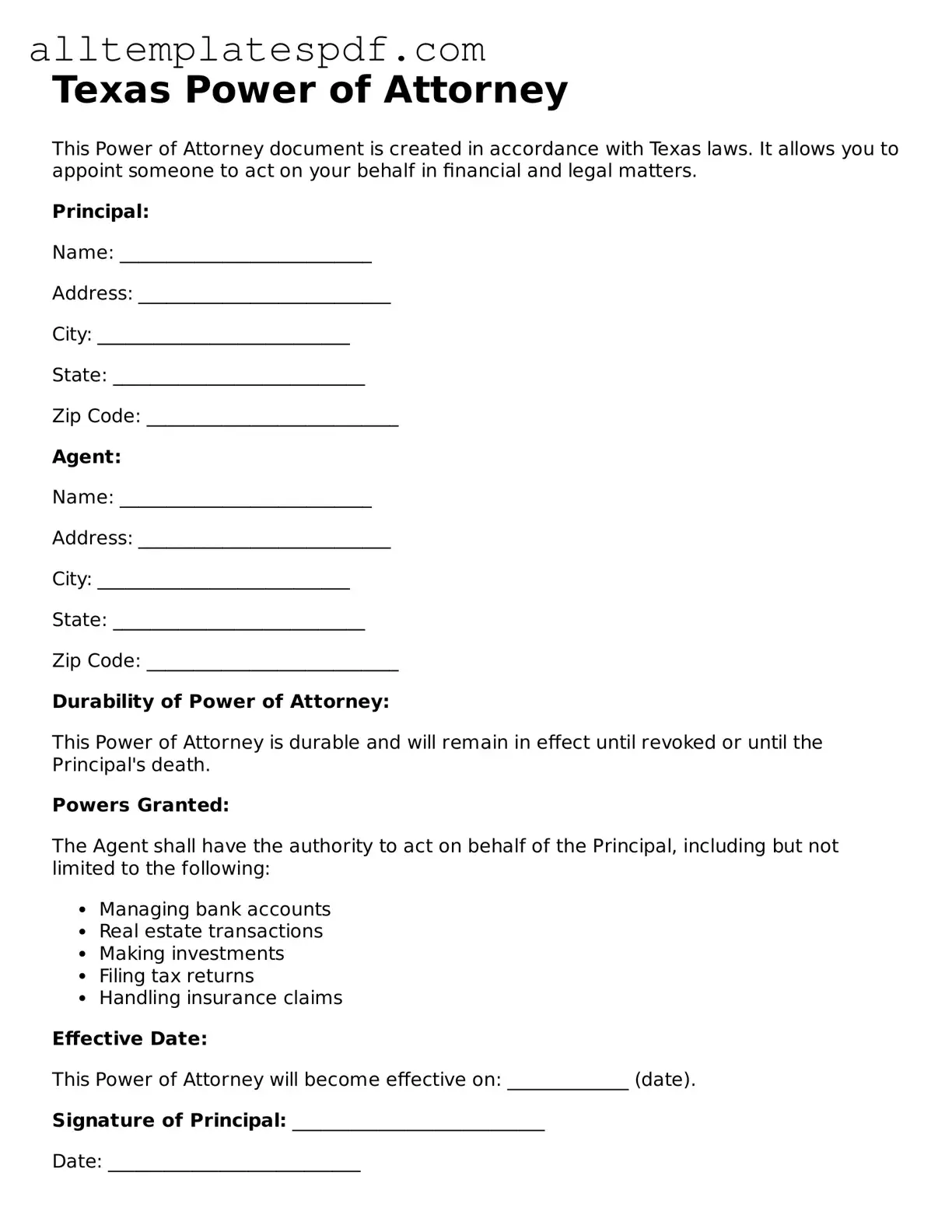Filling out a Texas Power of Attorney form can be straightforward, but many individuals make common mistakes that can lead to complications. One frequent error is failing to specify the powers granted to the agent. Without clear instructions, the agent may not have the authority to act in the way the principal intended.
Another common mistake is neglecting to date the document. A Power of Attorney should always include the date it was signed. Omitting this detail can create confusion about when the authority was granted, potentially leading to disputes or challenges regarding its validity.
Many people also overlook the requirement for witnesses or notarization. In Texas, certain types of Power of Attorney forms must be signed in the presence of a notary public or witnesses. Failing to adhere to these requirements can render the document invalid.
Inaccurate information about the agent is another issue. It’s crucial to provide the correct name and contact information for the person you are appointing. Errors in this section can lead to delays or difficulties when the agent attempts to exercise their powers.
Another mistake involves not considering the agent’s ability to act. Selecting someone who is not trustworthy or capable can lead to mismanagement of your affairs. It’s essential to choose an agent who understands your wishes and is willing to act in your best interest.
Some individuals make the mistake of not discussing the Power of Attorney with their chosen agent beforehand. Open communication ensures that the agent understands their responsibilities and is prepared to take on this role when needed.
Additionally, people often forget to revoke previous Powers of Attorney. If there are existing documents that grant authority to another agent, it is important to formally revoke those to avoid confusion and potential conflicts.
Lastly, many fail to keep copies of the completed form. After signing, it is vital to provide copies to the agent and retain one for personal records. This practice ensures that everyone involved has access to the document when necessary.
